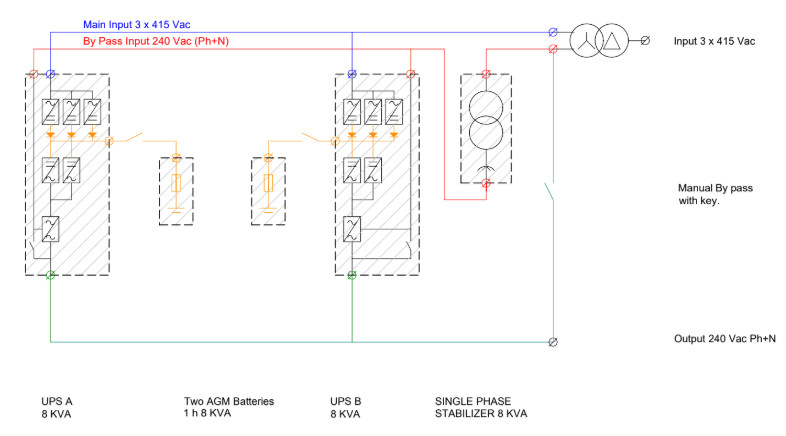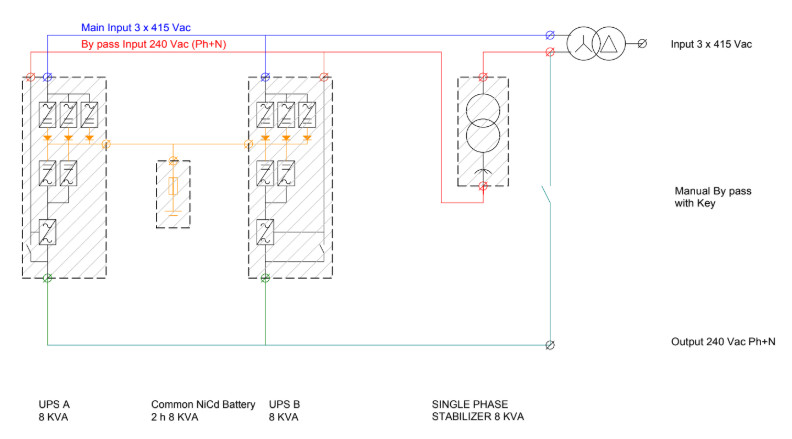In the case of installations bearing great responsibility, redundant equipment is usually set up to work in parallel, each at 50%, therefore if one fails, the other can assume 100% of the load and feed the installation normally. Another possibility is to use several pieces of equipment so that the sum total of their capacity allows one to stop with the other continuing to supply 100% of consumption needs.
The question then is to decide if we should install a battery for each device or a single battery for all.
Obviously, if we install one battery it can be used for all devices in the case of failure, whereas individual batteries for each piece of equipment would mean if the equipment fails that battery can no longer be used.
The answer lies in examining the characteristics of lead acid and nickel cadmium batteries and problems associated with their use.
Lead acid batteries are formed with plates welded in parallel to the comb which in turn, is attached to the terminals – the same for both positive and negative. If any of these welded plates have cold points, there is less section
Also, when the electrolyte has caused corrosion and decreased section, the battery will continue to function under normal conditions, but if you require a boost in current, e.g. to start up a thermal engine, a high current density per cm2 will be produced causing the material to fuse and the battery to short.
In NiCd batteries all these components are directly constructed using stainless steel or another conducting material coated in electrolyte, in a form that will not corrode and therefore, not lead to shorts due to current surges.
Therefore, if lead acid batteries are going to be installed, we recommend using one battery per piece of equipment so that if one battery fails, the others will continue functioning.

If NiCd batteries are to be used, then a shared central battery is recommended so as to utilize all the installed capacity even if an electronic unit of power fails.

When using centralized batteries, a practical consideration is how to recharge the batteries.
If there are two devices and each one recharges 50%, it is clear that in the event of a breakdown in one device, recharge will take twice as long while will still functioning. What cannot be allowed to occur is that the battery recharges to 200% (we recently supplied a system where, if one machine reports a failure, the other doubles the battery current).
Another story is the typical game of charging a NiCd battery to C10 as if it were a lead acid battery, even though it can perfectly tolerate C5.
N.B. Years ago (and still in some copy/paste projects), when using less precise analogue control electronics, it was normal to connect the redundant equipment in scales. One device stops while the other continues working, nating at a set time. The criteria for the setup of the batteries would be the same as in the above-mentioned case.
Further, this comment applies to UPS systems where the battery feeds an inverter or direct current systems with the battery connected through the rectifier.